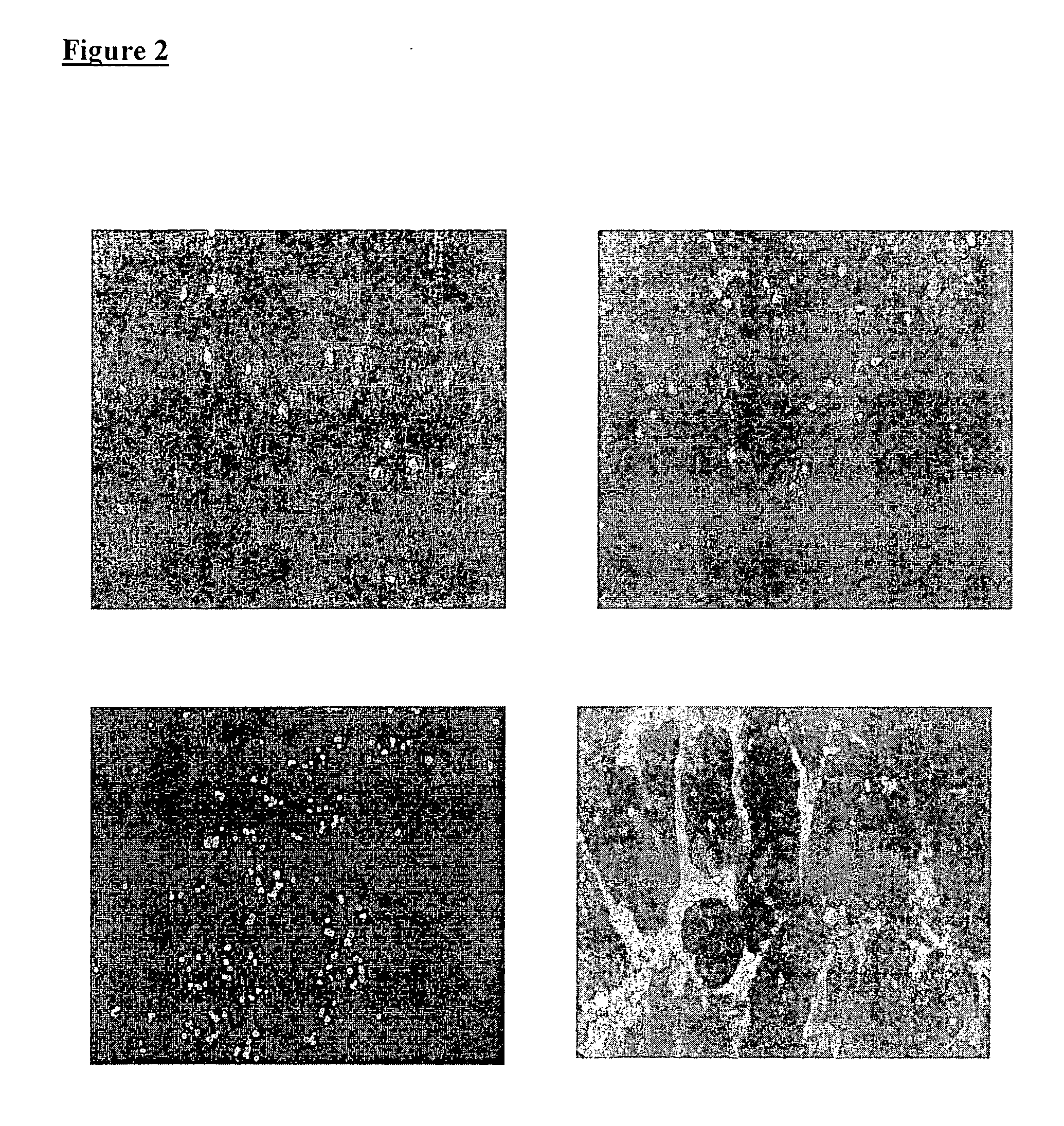Anti-EGFR antibody therapy based on an increased copy number of the EGFR gene in tumor tissues
a tumor and gene-based technology, applied in the field of anti-egfr antibody therapy based on an increased copy number of the egfr gene in tumor tissues, can solve the problems of no diagnostic tools to identify, most treated patients are exposed to the risk of ineffective therapy with undesired side effects, and most treated patients are exposed to the risk of undesired side effects. , the effect of improving survival prediction and increasing the copy number of the egfr gen
- Summary
- Abstract
- Description
- Claims
- Application Information
AI Technical Summary
Benefits of technology
Problems solved by technology
Method used
Image
Examples
example 1
[0109]Patients and Treatment With Anti-EGFR Monoclonal Antibodies
[0110]Among patients enrolled at Ospedale Niguarda Ca' Granda into clinical trials of anti-EGFR moAbs panitumumab or cetuximab for treatment of EGFR-expressing mCRC, we evaluated 31 patients with radiologically demonstrated tumor sensitivity or resistance to this therapy (Table 1). Patients were selected based on the availability of sufficient tumour tissue for present studies. All patients had EGFR-expressing mCRC, displaying ≧1% malignant cells stained for EGFR evaluated by IHC using the DAKO EGFRPharmDX kit in central laboratories of each clinical protocol (Cunningham et al., 2004, N Engl J Med 351: 337-345). Cetuximab (chimeric IgG1 moAb; Erbitux®, Merck, Milan, Italy) and panitumumab (fully human IgG2 moAb; Amgen, Thousand Oaks, Calif., USA) both target the ligand-binding domain of the EGFR. Their clinical activities are expected to be comparable except for the reduced incidence of infusion reactions seen with the...
example 2
[0111]Mutational Analysis
[0112]DNA was extracted from paraffin embedded samples. For each patient, 10 sections were prepared. An additional representative section was deparaffinized, stained with hematoxylin-eosin and analyzed for detailed morphology. Regions displaying tumor tissues were marked and the tissue was extracted with 0.2M NaOH / 1 mM EDTA and then neutralized with 100 mM Tris-TE. After extraction DNA was purified using Qiagen PCR Purification Kit (Cat. No. 28104) following manufacturer instructions. Exon specific and sequencing primers were designed using Primer3 software (http: / / frodo.wi.mit.edu / cgi-bin / primer3 / primer3_www.cgi) and synthesized by Invitrogen™. Primer sequences were: Forward, reverse and sequencing primers for each exon were as follows:
EGFR-Ex18GCTGAGGTGACCCTTGTCTC; ACAGCTTGCAAGGACTCTGG;TGGAGCCTCTTACACCCAGT;EGFR-Ex19CCCAGTGTCCCTCACCTTC; CCACACAGCAAAGCAGAAAC;GCTGGTAACATCCACCCAGA;EGFR-Ex21TGATCTGTCCCTCACAGCAG; TCAGGAAAATGCTGGCTGAC;TTCAGGGCATGAACTACTTGG;P13K C...
example 3
[0114]Analysis of EGFR Gene by Fluorescent In Situ Hybridization (FISH)
[0115]Tissue sections were treated following the procedure used for Her2 FISH detection Kit (Dakocytomation, Glostrup, DK). Samples were placed in a pretreatment solution for 30 min at 96° C. and then digested with pepsin solution for 30 min at room temperature. Dual-color, dual-target FISH assays were performed using the LSI EGFR Spectrum Orange / CEP7 Spectrum Green Probe (Vysis, Downers Grove, Ill.). Briefly tissue sections, covered with 10 μL probe solution, were incubated at 75° C. for 5 min to co-denature the EGFR and CEP 7 probes and allowed to hybridize overnight at 37° C. Both co-denaturation and hybridization were performed sequentially in a microprocessor-controlled system (Hybridizer, Dakocytomation, Glostrup, DK). Post-hybridization stringency wash was performed in water bath at 65° C. for 10 min. After washing twice and drying at room temperature for 15 min, tissue sections were covered with 4′6-diami...
PUM
| Property | Measurement | Unit |
|---|---|---|
| Volume | aaaaa | aaaaa |
| Volume | aaaaa | aaaaa |
| Volume | aaaaa | aaaaa |
Abstract
Description
Claims
Application Information
 Login to View More
Login to View More - R&D
- Intellectual Property
- Life Sciences
- Materials
- Tech Scout
- Unparalleled Data Quality
- Higher Quality Content
- 60% Fewer Hallucinations
Browse by: Latest US Patents, China's latest patents, Technical Efficacy Thesaurus, Application Domain, Technology Topic, Popular Technical Reports.
© 2025 PatSnap. All rights reserved.Legal|Privacy policy|Modern Slavery Act Transparency Statement|Sitemap|About US| Contact US: help@patsnap.com



